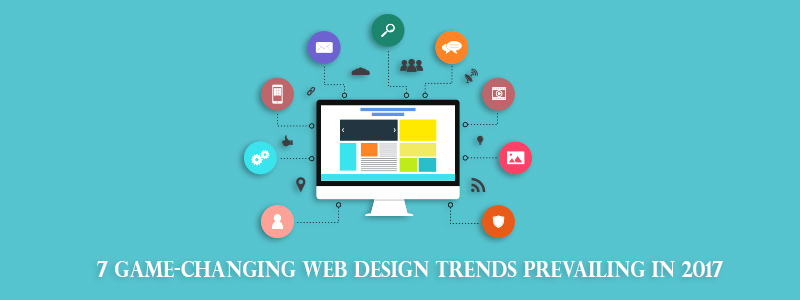Every year witnesses new web design trends that add value to the web presence of a business in terms of its usability and aesthetics. While some of these may rule the market for a longer period, most do not last long. Regardless of this, in an increasingly competitive digital market-place, it is no longer an option for any progressive business to stay indifferent about these website design trends. Here are some of latest website design trends that have ruled the market in 2017 and hold the promise of prevailing in the market beyond 2017.
1) Paradigm Shift in Web Design
The term ‘web design’ has witnessed a major paradigm shift in the recent years. While the traditional web design that was simply meant to beautify the websites, the web design of 2017 is all about how to better the user experience and add meaning to the user journeys and user stories.
2) Conversational E-Commerce
With the growing popularity of messaging platforms and the advent of bots, the e-commerce companies have been inclined towards adopting conversational e-commerce this year. In such a scenario, the designers are likely to innovate and experiment more with the conversational interfaces.
3) Cards and grid for minimalistic UIs
Minimalism in the UI design has been taken to the next level with the card & grid style as prescribed by the material design guideline. This style has become so popular of late that even the biggest of brands are taking a plunge into it. The advantage of using such UI is that with this, the content can be presented in reader-friendly chunks for easy perusal. This eases the use of the website more, adding furthermore to the website user experience. Moreover, it is easy to integrate such style into a responsive web design so that it works well across all devices as well.
4) Visual data
With the growing prevalence of big data and data analytics, visually appealing presentation of data is not anymore exclusive to the big brands. So, while the small brands are still in the adaptive phase of using data analytics tools and techniques, the bigger brands are a step ahead with offering a first-hand experience to their end-users with visually appealing presentation of stats. With the enhanced interaction, this again, contributes to a positive user experience.
5) Predominance of responsive designs
Building a responsive web presence is a proven way to take the user experience of a website a few notches higher and this is the reason why most of the businesses these days are focused on imparting flexibility to their website design so as to adjust according to whichever device is used to peruse them. This has become a priority for all the business websites specially after Google changed its ranking algorithm last year to encourage responsiveness.
6) Adoption of ‘Mobile first’ designs
With mobile devices becoming the primary tools for digital interactions, the adoption of a mobile-first approach is bound to happen. Google’s Mobile-First update has given way to more businesses taking the path of designing the website keeping mobile devices in mind and later, expanding it for the devices with larger screens. The mobile-first approach also includes selection of the critically important content to be presented on mobile devices to maintain user-friendliness and keeping rest of the details for the desktop version.
7) More original visuals with less stock images
In 2017, the brands are getting more focused on the originality of the images by eliminating the use of stock images. The new trend is to break away from the monotony brought about by means of using the same/similar WordPress themes that employ the same kind of inanimate stock images leaving little scope for creativity. The brands are innovating with the presentation on the websites to offer a pleasant and bespoke visual experience on their website to the visitors.


